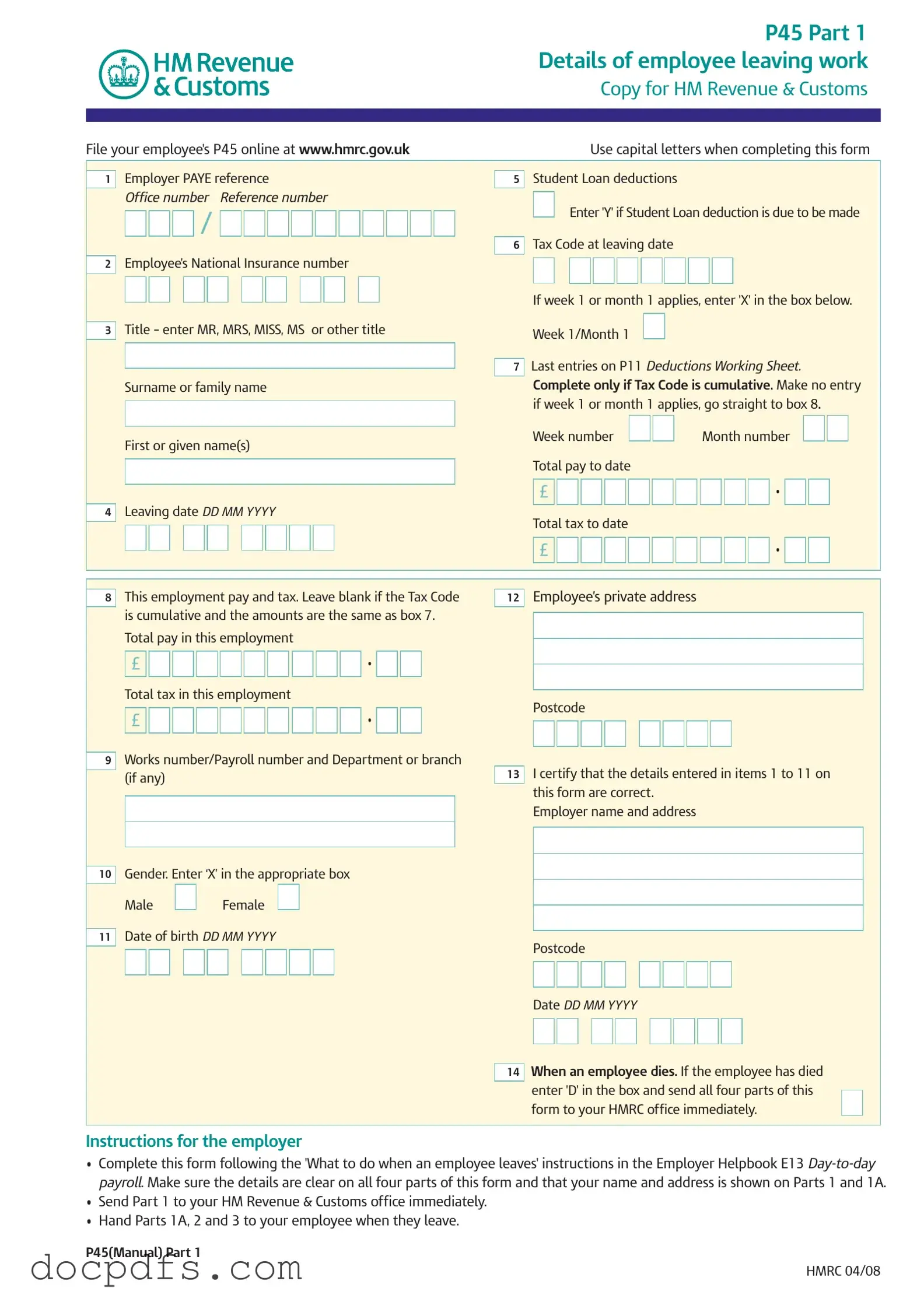The P45 form is a critical document for both employees and employers in the United Kingdom, serving as an official record when an individual leaves a job. It is divided into several parts, each designed to capture essential information about the employee's employment and tax status. The form includes details such as the employee's National Insurance number, tax code at the time of leaving, and total pay and tax deductions up to the date of departure. Employers are required to complete the P45 accurately, ensuring that all relevant sections are filled out, including the employer's PAYE reference and office number. Upon completion, Part 1 is sent to HM Revenue & Customs (HMRC), while Parts 1A, 2, and 3 are provided to the departing employee. This process is crucial for the employee's future tax arrangements, especially when starting a new job or claiming benefits. The P45 form also contains specific instructions for various scenarios, such as if the employee is claiming Jobseeker's Allowance or if they have passed away. Understanding the P45 form is essential for ensuring a smooth transition for employees leaving a job and for maintaining compliance with tax regulations.
